“Sing a song of sixpence, a pocket full of rye, four and twenty blackbirds, baked in a pie.” So goes the popular English nursery rhyme “Sing a Song of Sixpence.” From this rhyme came the name for a small chain of late 1960s restaurants called Four’n 20 Restaurant & Pie Shop. Two of these restaurants were built in San Jose in 1970 and 1971. One was on Meridian near Hamilton, and the other was on Kooser and Blossom Hill Roads, across from Princeton Plaza. I remember eating at both locations with my family. Like Marie Callendars and Bumbleberry Pies (The Pruneyard), Four’n 20 featured pie, with a limited menu of soup, sandwiches, hamburgers, and salads.
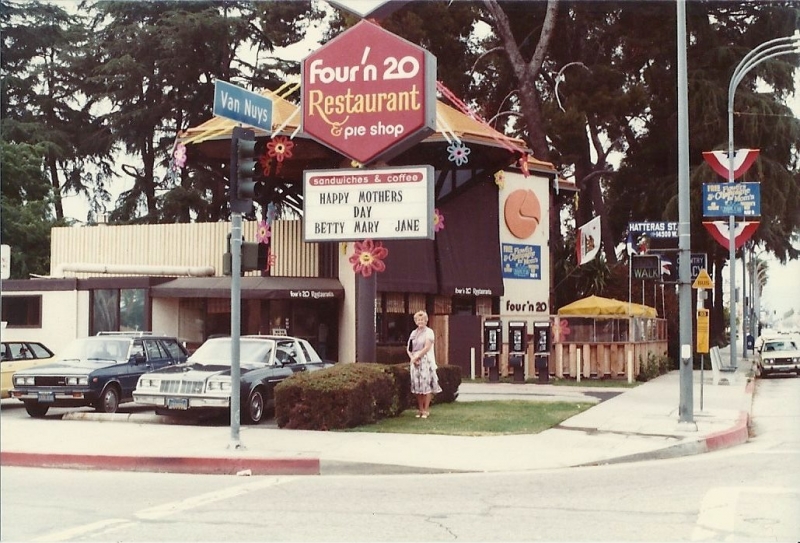
Though both San Jose locations were out of business by 1974, both buildings still stand, having been re-purposed by other businesses through the years. Currently the 1572 Meridian Avenue building houses Wright Lighting, while the 1357 Kooser Road location stands vacated within a chain link fence. The San Jose permits site for the Kooser Road location indicates that there was a 2004 preliminary review for demolition, with plans for a fifty foot structure containing retail stores and condominiums.
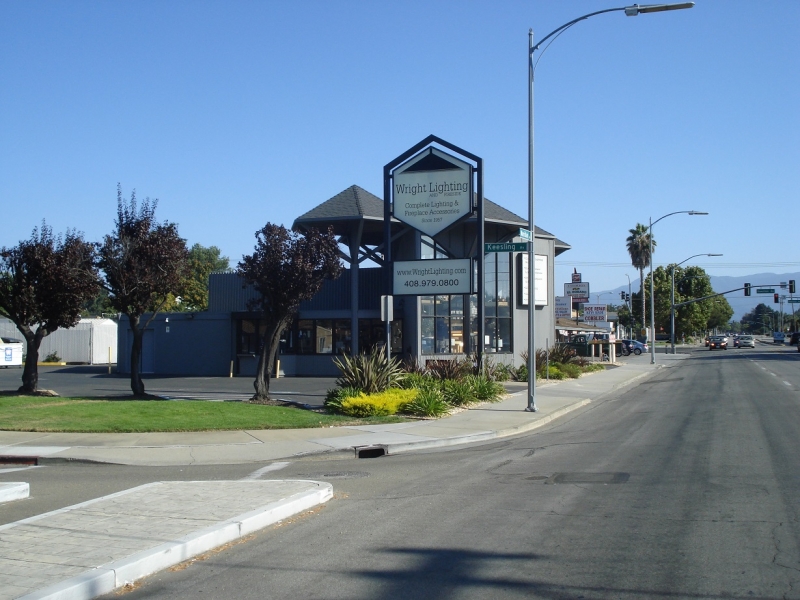

My Google search on the restaurant chain quickly led me to Los Angeles, where two of the restaurants are still in operation. I was able to connect with the co-owner David Burkin. Burkin began working for the original owner in 1975, managing the four Los Angeles locations (Encino, Northridge, Sherman Oaks, and Valley Village). The owner eventually began selling off the restaurants, and in 1979 David Burkin and his business partner Michael O’Donnell purchased the remaining two (Sherman Oaks and Valley Village).
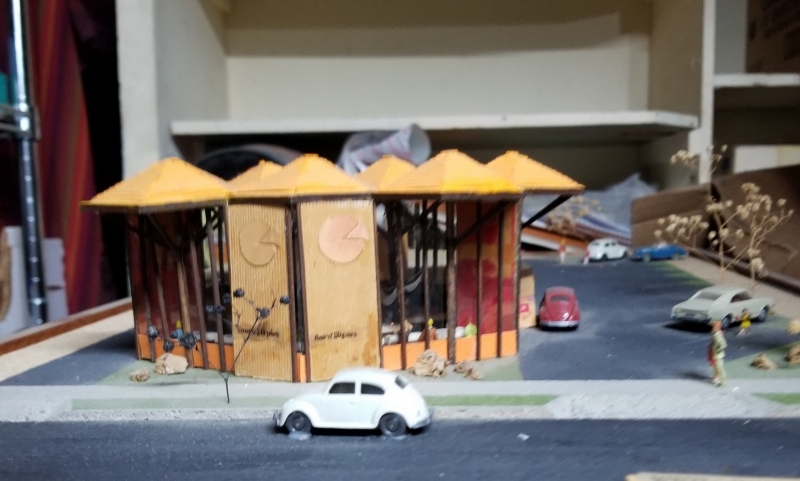

I learned from David that the chain had been created by United Fruit Company in 1969, and was overseen by its Baskin-Robbins division. There were four restaurants in Los Angeles, two in San Jose, and three in New York (two in Queens, one on Long Island). The parent company apparently had some problems in the early 1970s, and decided to sell off the chain about 1974.
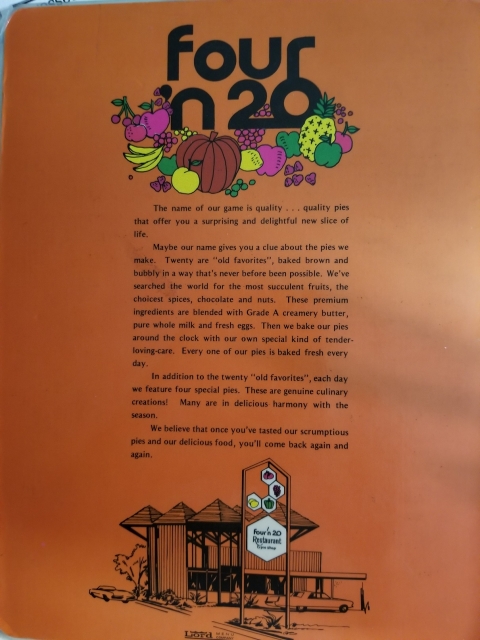
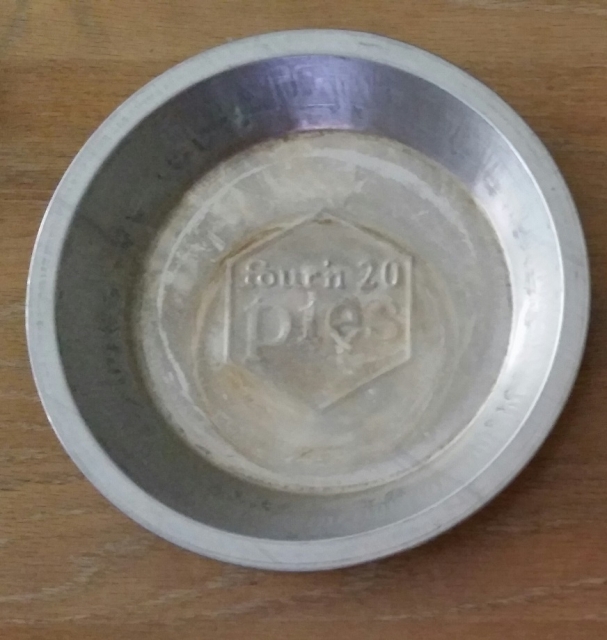
Update:
I received the following response to this blog post from architect Harold Bissner's son:
My father met Burton Baskin and Irvine Robbins about 1966 as they sought to expand their franchised outlets nationwide exponentially at the threshold of many such companies seeking to go, or further expand their national footprints emulating Ray Kroc.
My father and John [Nyberg] were noted Pasadena Architects for their expertise and innovations in frozen food production facilities and other such food processing plants as well as a strong background in restaurant designs dating to my grandfathers association here in SoCal with L.L.Frank (Lawry's) and Ted Van de Kamp who were Brothers in Law through their wives who were sisters. Harold and John did very little as to store design.
"Butch" Baskin died unexpectedly at age 55 in 1967. Irv was the creative head while Butch was the business guy. Irv was devastated and asked my dad if he knew a someone who could come on board. Fortuitously my fathers best friend Bob Hudecek, who was a senior VP at Van de Kamp's, had just been fired in a dispute of egos with a newly appointed president promoted internally.
Bob came on and really made the things happen in concert with my dad; expansion of the ice cream venues succeeded remarkably, modernization of existing production facilities nationwide was perfected, production rights were bought back from OEM's, additional venues were explored which led to, among other things, Four 'n Twenty and profits soared.
As I was given a narration many years ago, United Fruits became United Brands which was then listed for public trading. I believe they then dictated that the pie shops be spun off as a low performance unit though they had not been given enough time to develop the brand. Sans the underwriting the venture withered. Rotten shame. Baskin-Robbins was then absorbed by Allied Brewery/Lions International. Now Domeque.
Harold Bissner III
Further Research in the California Room
- Mid-century by the Bay : a celebration of the San Francisco Bay Area in the 1950s and 1960s, by Heather M. David
- Mid-century modern architecture travel guide : West Coast USA, by Sam Lubell
- California Room Index: Restaurants
- San Jose City Directories and Telephone Books


Add a comment to: Looking Back: San Jose’s Architecturally Unique Four’n 20 Pie Buildings